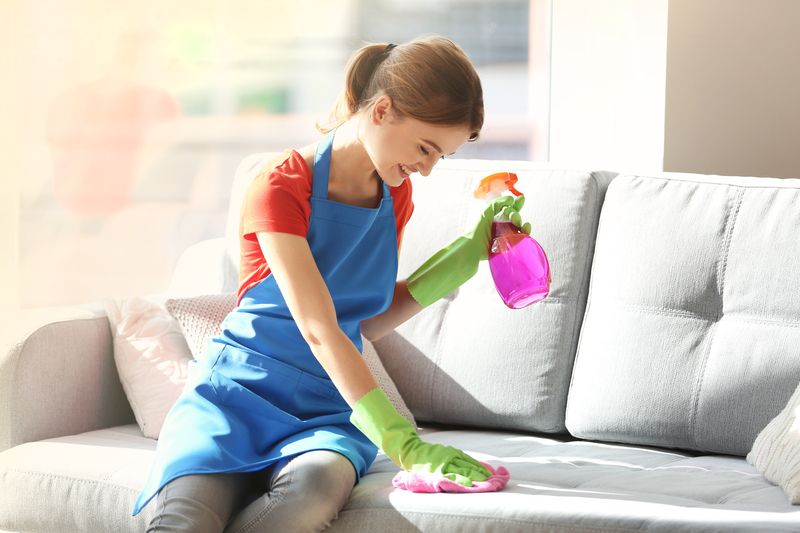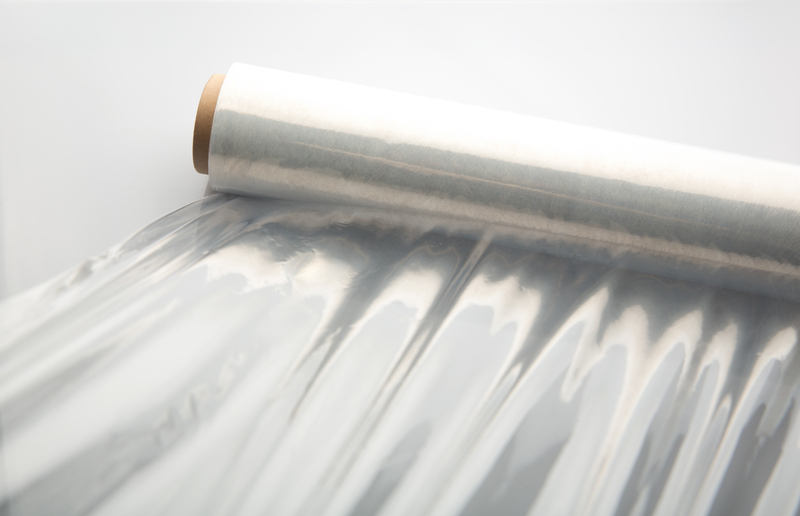Remove Burnt-on Residue From Your Stovetop Like a Pro
Posted on 01/07/2025
Remove Burnt-on Residue From Your Stovetop Like a Pro: The Ultimate Guide
A sparkling clean stovetop is every home cook's dream, but burnt-on residue can turn that dream into a nightmare. Whether you've had a spillover disaster or neglected a boiling pot, baked-on gunk can seem impossible to remove. But fear not! In this comprehensive, SEO-optimized guide, we'll reveal professional secrets and proven methods to remove stubborn residue from your stovetop, regardless of whether your appliance is gas, electric, or glass-ceramic. Get ready to reclaim your kitchen's shine and make your stovetop look brand new!
Why Do Burnt-On Stovetop Stains Happen?
Before you learn how to remove burnt-on residue like a pro, it's helpful to understand why these stains happen in the first place. The main culprits include:
- Boilovers - When liquids like milk or sauces overflow and hit a hot surface, they instantly scorch.
- Grease Splatter - Cooking oil droplets heat up and burn onto the surface over time.
- Sugar-based Spills - Foods containing sugar can caramelize and burn quickly, forming hard, sticky patches.
- Neglected Spills - Leaving spills unattended allows them to bake on with repeated exposure to heat.
No matter the cause, burnt residue not only looks unsightly but can also affect the performance of your stove and even pose a safety hazard if left unchecked.

Essential Tools and Supplies for Stovetop Cleaning
To remove burnt-on stove residue like a professional, you'll need the right gear. Here's what cleaning experts recommend keeping on hand:
- Microfiber cloths - Soft yet effective at removing grime without scratching surfaces.
- Non-scratch scrubbing pads - Perfect for tough stains but gentle on glass and metal.
- Plastic or silicone scrapers - Essential for lifting stuck-on food without damaging your stovetop.
- Baking soda - A mild abrasive that loosens even the toughest gunk.
- White vinegar - Breaks down grease and mineral deposits naturally.
- Dish soap - Cuts through everyday kitchen grime.
- Commercial stovetop cleaner - Handy for extra-tough stains or specialized surfaces.
- Gloves - Protect your hands from chemicals and hot surfaces.
Step-by-Step Guide: Remove Burnt-On Residue from Your Stovetop Like a Pro
Step 1: Allow Your Stovetop to Cool Completely
Safety first! Always wait until the stovetop is cool to the touch before you begin cleaning. Attempting to remove burnt-on grime while the surface is hot can result in burns or further baking-in of the residue.
Step 2: Remove Grates, Burners, or Detachable Parts
Carefully take off any removable parts like burner grates or knobs from a gas stove. For electric stoves, gently lift away coil burners if possible. This exposes the entire surface, making it easier to clean baked-on residue thoroughly.
Step 3: Wipe Loose Debris Away
Use a dry microfiber cloth or paper towel to sweep away crumbs, loose food bits, or ash. This makes the main cleaning process more efficient.
Step 4: Soften the Burnt-on Residue
To remove burnt-on stovetop stains, you must first soften them:
- For metallic stoves: Soak a cloth in hot, soapy water, wring it out, and lay it directly over the burnt area for 15 minutes.
- For glass-ceramic stoves: Use warm water only, or a 50/50 mix of water and white vinegar.
This softens grime and makes it easier to remove without scratching.
Step 5: Apply Baking Soda Paste
Baking soda is a magic ingredient for cleaning burnt residue, thanks to its gentle abrasive properties. Mix 2 parts baking soda with 1 part water to form a thick paste. Spread it generously over all burnt-on spots.
Step 6: Let the Paste Sit and Work Its Magic
Leave the baking soda paste to sit for at least 15-30 minutes. For very stubborn stains, you can let it sit overnight with a damp cloth placed on top to prevent drying.
Step 7: Scrub with a Non-Scratch Pad or Plastic Scraper
Use your non-scratch scrub pad or a plastic scraper to gently lift and scrub away the softened burnt-on gunk. Apply moderate pressure and work in small circles. Avoid using steel wool or metal scrapers, which can scratch and damage the stovetop finish.
Step 8: Use White Vinegar for Extra Cleaning Power
If any scorched residue remains, spray a little white vinegar on the area. Let it fizz with the baking soda, then wipe away the mixture. The vinegar's acidity breaks down tough stains and dissolves soap scum, leaving your stovetop shiny.
Step 9: Rinse and Buff
Rinse the surface with a clean, damp microfiber cloth. Follow with a dry cloth to buff your stovetop to a streak-free shine.
Step 10: Clean Grates and Burners Separately
Don't forget your grates and burners! Soak them in hot, soapy water, scrub with a non-scratch pad, rinse, and let them air dry before reassembling your stovetop.
Special Considerations: Different Stove Types
How to Remove Burnt-on Stains from a Gas Stovetop
- Use baking soda and vinegar for tough spots on the enamel surface.
- A toothbrush or soft brush can get into tight spaces around burners.
- Never submerge burner heads with electrical elements; wipe with a damp cloth instead.
How to Clean Burnt-on Residue from Glass or Ceramic Stovetops
- Only use specialized stovetop cleaner or baking soda; harsh abrasives can scratch the surface.
- A dedicated glass scraper (plastic blade) is ideal for stubborn, dried spills.
- Finish with a spritz of glass cleaner for extra sparkle.
How to Remove Burnt-on Grime from Electric Coil Stovetops
- Unplug and remove the coils before cleaning.
- Wipe coils with a damp, soapy cloth - never submerge.
- Clean drip pans with baking soda paste and rinse well.
Pro Tips to Prevent Burnt-On Residue in the Future
- Wipe up spills immediately while they're still wet and easy to remove.
- Use stovetop covers or splatter guards when cooking messy foods.
- Deep clean your stovetop weekly to prevent buildup.
- Soak grates and removable pieces regularly for effortless cleaning.
- Practice mindful cooking to avoid boilovers and spills.
FAQs About Burnt-On Stovetop Residue
Can I use oven cleaner to remove burnt residue from my stove?
In most cases, avoid oven cleaner on stovetops, especially glass, ceramic, or induction models. These formulae can be too harsh and may damage the finish.
Is it safe to use a razor blade scraper on my glass stovetop?
*Yes, but only use a scraper specifically designed for glass cooktops. Never use regular razor blades or metal scrapers, as they can cause permanent scratches.*
How often should I deep-clean my stovetop?
Ideally, you should deep-clean your stovetop once a week, with quick wipe-downs after each use, to prevent stubborn burnt-on residue from forming.
Top Mistakes to Avoid When Cleaning Burnt-On Stovetop Residue
- Using metal scrapers or steel wool - These items can scratch and dull your stove surface permanently.
- Scrubbing while hot - Wait for the stove to cool to avoid burns and spreading residue.
- Applying harsh chemicals indiscriminately - Always check your stove's user manual for recommended cleaners.
- Forgetting to clean under knobs and edges - Food and grime can hide here and cause odors or malfunctions.
DIY Cleaning Recipes for Burnt-On Residue
Lemon & Baking Soda Scrub
- Mix juice of 1 lemon with enough baking soda to create a paste.
- Apply to burnt spots, let sit for 10 minutes, scrub, and rinse.
Hydrogen Peroxide & Baking Soda Paste
- Combine 2 tbsp baking soda with 1 tbsp hydrogen peroxide.
- Spread over tough stains, let bubble, wipe clean!

The Benefits of Regular Stovetop Cleaning
- Ensures optimal heating for better cooking results.
- Prevents fires and odors from built-up burnt food.
- Prolongs the lifespan of your stove and its components.
- Keeps your kitchen hygienic and visually appealing.
Final Thoughts: Mastering the Art of Stovetop Cleaning
Learning how to remove burnt-on residue from your stovetop like a pro doesn't require fancy gadgets or harsh chemicals. With the right techniques, simple household items, and a bit of elbow grease, you can keep your cooking space glowing. Remember, prevention is key, but when accidents happen, tackle spills quickly and use the proven steps in this guide for best results.
For more kitchen cleaning hacks and professional tips, be sure to bookmark this guide and share it with family and friends. Enjoy a spotless stovetop--and happy cooking!



